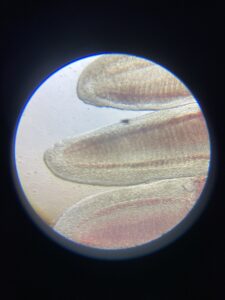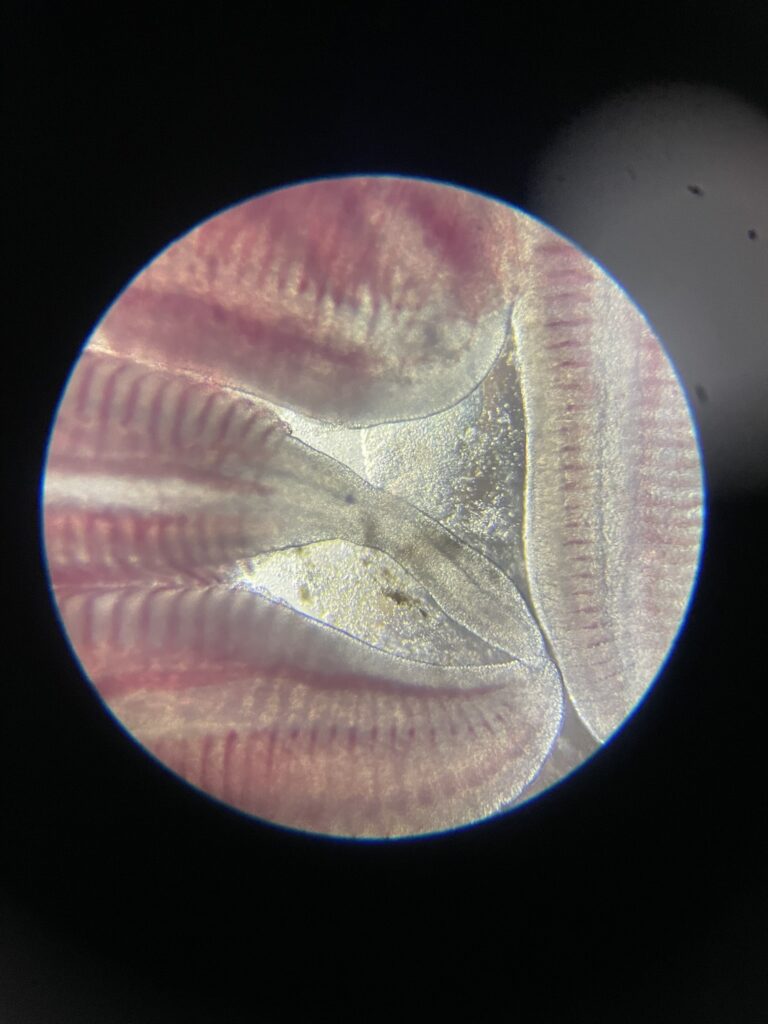Fish gills are one of the most important organs and highly susceptible to disease. Learn what gill disease can do to your fish and how to keep them healthy.
How do fish gills work?
Fish gills are essentially inside out lungs that do a ton of heavy lifting to keep your fish healthy. Fish gills are made up of a gill arch, primary and secondary lamellae. Blood flows from the heart, through the gills to the rest of the body, moving in the opposite direction from the water flow. As the oxygen-poor blood flows by the oxygen-rich water, oxygen and other molecules will diffuse across the concentration gradient, pulling oxygen in and pumping waste, such as ammonia out. In terrestrial animals, the kidneys handle most of the waste removal from the blood, but in fish, the gills are the primary site, making them that much more important.

Fish gills are designed to work with the water flowing in the mouth and out of the gills. They do not work well in the reverse direction. If you are ever in a position where your fish requires ventilation, always keep the water moving in their mouths in a forward motion. Do not move them back and forth since this will only allow for 50% of their possible gill function.
What are the symptoms of gill disease?
If the fish’s gills are not working properly, there are a few signs you may notice. First and foremost, your fish may be breathing rapidly or not want to move much. It can be hard to determine increased respirations if you’ve never taken the time to watch your fish breathe. You may be able to compare their rate with others in the pond or tank, but many times, multiple, if not all the fish, will present similar symptoms.
Typically, gill disease shows up as lethargy or tired fish. If they can’t breathe, they can’t swim. They may congregate around higher oxygen areas such as waterfalls, aerators and filter outflows. Sudden death can often occur with gill disease.
If you notice any of the above clinical signs, you need to figure out what is going on quickly. If testing your water does not yield any helpful results, you will need to contact your aquatic veterinarian ASAP.
Most Common Causes of Fish Gill Disease
Poor Water Quality
As with much of our other content, poor water quality just sets fish up to fail. If their water isn’t healthy, neither are they. Since the gills are in direct contact with the surrounding water at all times, they are responsible for removing toxins from the blood in addition to bringing in oxygen while removing carbon dioxide.
A lot of the work that terrestrial kidneys do are actually done by the gills in fish. Many of these toxins, such as ammonia, are removed across a passive diffusion gradient. If levels in the fish are higher than the external water, it is easy to diffuse out various metabolites. However, if their external levels are higher than internal, many of these waste products will have nowhere to go and build up in the fish.
Some water quality issues, such as a chlorine toxicity, can directly damage the gill tissue, severely impacting their function. Once the damage is done from this type of event, the gill tissue has to regenerate which can take 5-8 weeks.
Parasites
Fish parasites just love gill tissue. It is full of nutrients to keep them fat and happy without risking external removal. There are many parasites that will specifically target gill tissue in freshwater and saltwater fish, including Ich, Cryptocaryon, flukes, Velvet and more.
Bacteria
Fish live in a toilet and are constantly surrounded by bacteria. Most of the time, these bacteria cannot penetrate into the fish’s body thanks to their robust immune system. However, if a fish is stressed or sick from something else in their environment, bacteria can easily enter into the gill tissue and quickly spread throughout the body.
Fungi
Most fungi infections in fish are actually water molds taking advantage of a weak fish. There are a few true fungi who are dangerous primary pathogens that can take advantage of a weak fish or poor environment. These severe fungal diseases are very difficult to treat since they destroy a good percentage of the normal gill tissue.
Viruses
Many viruses will attack gill tissue, such as Koi Herpes Virus and Carp Edema Virus. Side effects from viruses involving the lungs can lead to severe respiratory distress, lethargy and death.
How to Prevent Gill Disease
The best treatment method is prevention. All of the above etiologies will require different treatments, so the best case for your fish is prevention. Preventative care in fish focuses on good water quality, a high quality diet and rigorous quarantine standards for all new additions. The better you can keep your fish at their optimum health, the better they can keep themselves healthy.

